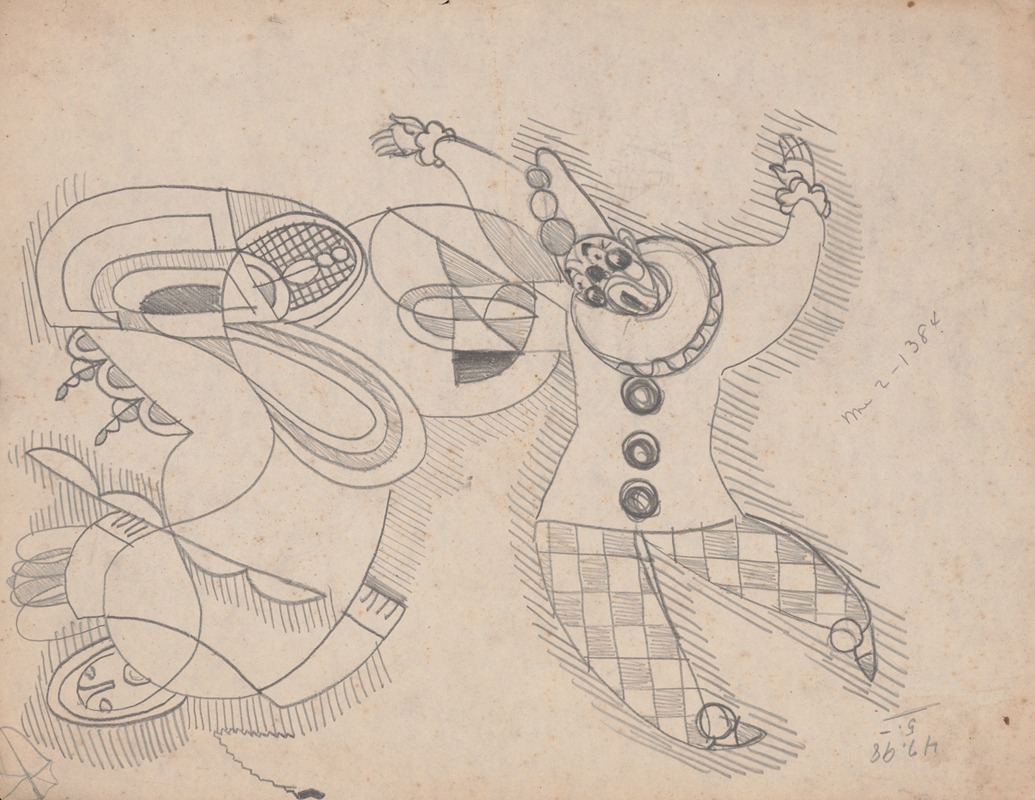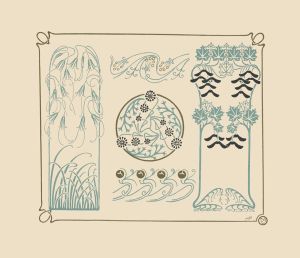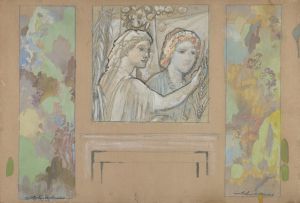
Miscellaneous interior details.] [Details, figural doodles, and notations
A hand-painted replica of Winold Reiss’s masterpiece Miscellaneous interior details.] [Details, figural doodles, and notations, meticulously crafted by professional artists to capture the true essence of the original. Each piece is created with museum-quality canvas and rare mineral pigments, carefully painted by experienced artists with delicate brushstrokes and rich, layered colors to perfectly recreate the texture of the original artwork. Unlike machine-printed reproductions, this hand-painted version brings the painting to life, infused with the artist’s emotions and skill in every stroke. Whether for personal collection or home decoration, it instantly elevates the artistic atmosphere of any space.
Winold Reiss was a German-American artist known for his portraits and interior designs, particularly those that captured the cultural diversity of early 20th-century America. Born in Karlsruhe, Germany, in 1886, Reiss moved to the United States in 1913, where he became a prominent figure in the Harlem Renaissance and contributed significantly to the American art scene through his innovative approach to design and illustration.
Reiss's work often featured a blend of European artistic techniques and American themes, reflecting his background and his new environment. He was particularly interested in portraying the diverse ethnic groups he encountered in America, including African Americans, Native Americans, and immigrants from various backgrounds. His portraits are celebrated for their vibrant colors and attention to detail, capturing the essence and individuality of his subjects.
"Miscellaneous Interior Details" is one of Reiss's works that exemplifies his interest in interior design and figural representation. While specific details about this particular piece are limited, it is known that Reiss often incorporated figural doodles and notations into his designs, which added a unique and personal touch to his work. These elements were not merely decorative but served to enhance the narrative quality of his art, providing insight into the cultural and social contexts of the time.
Reiss's approach to interior design was holistic, often integrating architecture, furniture, and decorative elements to create cohesive and immersive environments. His work in this field was not limited to private residences; he also contributed to public spaces, including restaurants, hotels, and theaters. One of his notable projects was the design of the interiors for the Cincinnati Union Terminal, where his murals depicted the history and industry of the region, showcasing his ability to blend art with storytelling.
Throughout his career, Reiss maintained a strong commitment to education and mentorship. He founded the Winold Reiss Art School in New York City, where he taught and inspired a new generation of artists. His influence extended beyond his own work, as he encouraged his students to explore and celebrate cultural diversity through their art.
Reiss's legacy is marked by his dedication to capturing the rich tapestry of American life and his innovative contributions to both portraiture and interior design. His work remains a testament to the power of art to transcend cultural boundaries and to reflect the dynamic and multifaceted nature of society. Despite the passage of time, Reiss's art continues to resonate, offering a window into the past and a source of inspiration for future artists.






![Graphic design for Photo Engravers Convention, Chicago.] [Poster featuring cartoon-like storks](/imgs/249252/s/winold-reiss-graphic-design-for-photo-engravers-convention-chicago-poster-featuring-cartoonlike-storks-9f0255ed.jpg)
![Design for unidentified bedroom with canopy bed.] [Interior perspective elevation](/imgs/249297/s/winold-reiss-design-for-unidentified-bedroom-with-canopy-bed-interior-perspective-elevation-72bee5bc.jpg)
![Design for unidentified building ‘Small Dining Room’.] [Drawing of dining room with benches, in black, vermillion and white, bilaterally positive and negative coloring](/imgs/249298/s/winold-reiss-design-for-unidentified-building-small-dining-room-drawing-of-dining-room-with-benches-in-black-vermillion-and-white-bilaterally-positive-and-negative-coloring-31217372.jpg)
![Drawings for proposed decorations of Mike Lyman’s Restaurant, 424 W. Sixth St. Los Angeles, CA.] [Scheme 1; elevation – K – showing bar](/imgs/249336/s/winold-reiss-drawings-for-proposed-decorations-of-mike-lymans-restaurant-424-w-sixth-st-los-angeles-ca-scheme-1-elevation-k-showing-bar-6d934644.jpg)
![Floral design for pier, capital, and ceiling.] [Perspective elevation drawing](/imgs/249344/s/winold-reiss-floral-design-for-pier-capital-and-ceiling-perspective-elevation-drawing-f863e626.jpg)
![Interior design drawings for unidentified rooms.] [Sketch for unidentified room with silver wall and ceiling](/imgs/249362/s/winold-reiss-interior-design-drawings-for-unidentified-rooms-sketch-for-unidentified-room-with-silver-wall-and-ceiling-af719bb9.jpg)
![Interior perspective studies for Restaurant Crillon, 15 East 48th Street, New York, NY.] [Study for Batik Room or Main Dining Room](/imgs/249377/s/winold-reiss-interior-perspective-studies-for-restaurant-crillon-15-east-48th-street-new-york-ny-study-for-batik-room-or-main-dining-room-f49c2d45.jpg)

![Design proposals for Puck Theater, New York, NY.] [Interior perspective study](/imgs/249412/s/winold-reiss-design-proposals-for-puck-theater-new-york-ny-interior-perspective-study-27d2bb72.jpg)
![Miscellaneous small sketches for inlaid table tops.] [Design with circular and geometric motif](/imgs/249433/s/winold-reiss-miscellaneous-small-sketches-for-inlaid-table-tops-design-with-circular-and-geometric-motif-3afe4da6.jpg)

